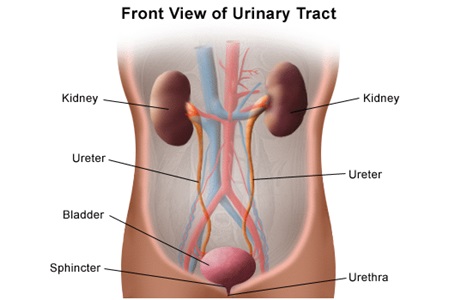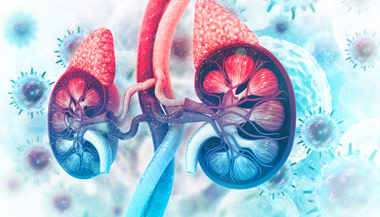Is That Burning Sensation a Urinary Tract Infection?
Reviewed By:
Chances are, it has happened to you: You go to the bathroom and feel a burning sensation when you urinate. That feeling is a telltale symptom of a urinary tract infection (UTI), and it’s one that most women are familiar with. UTIs are incredibly common. In fact, the risk of a woman contracting one in her lifetime ranges from 40% to more than 50%.
UTIs are inconvenient and can make a woman feel miserable from the pelvic pain, frequent urination and that burning feeling. Prompt treatment is key to relieving these symptoms and preventing possible complications, such as kidney infection.
Melindia Mann, a women’s health nurse practitioner who specializes in the diagnosis and treatment of UTIs at Johns Hopkins Bayview Medical Center, talks about the common causes of urinary tract infections, how to prevent them and when to see a doctor or practitioner.
What Is a Urinary Tract Infection?
Wondering where that burning comes from? A urinary tract infection happens when bacteria grow in the kidneys, bladder or urethra. The urethra is the tube that connects the bladder to the opening between the clitoris and the vagina so urine can exit the body.
Once the bacteria settle in, they wreak havoc and can cause a laundry list of UTI symptoms that include:
- Pelvic or abdominal pain.
- Frequent or painful urination.
- Feeling the urge to urinate even when your bladder is empty.
- Cloudy or reddish urine.
If the infection spreads to the kidneys or bloodstream, a woman may also experience:
- Nausea and vomiting.
- Fever or chills.
- Middle back pain, a possible sign of kidney inflammation.
How does the urinary system work?

Explore the urinary system, its functions and its organs, including the kidneys, renal pelvis, ureters, bladder and urethra.
Urinary Tract Infection Diagnosis
If you think you might have a UTI, don’t worry. Diagnosing one requires a simple urinalysis. You urinate into a cup, and your clinician examines the urine for signs of infection. The standard course of treatment is three to five days of antibiotics.
In some cases, especially if your infections keep coming back, your practitioner may order a urine culture, a specific test for UTIs. A culture identifies the bacteria causing your infection so your clinician can choose the most effective antibiotic to treat it. The results of a urine culture are typically not available for two to four days.
Causes and Risk Factors of UTIs
Common risk factors for urinary tract infection in women include:
- Sexual activity: “You are at an increased risk for urinary tract infections from intercourse and even your birth control,” according to Mann. A diaphragm, spermicide and some vaginal lubricants can change the bacterial makeup of the vagina, leading to increased risk of UTI for some women.
- Immune system suppression: “Chronic or acute illnesses can weaken the body’s immune system and defense against bacteria, leaving you vulnerable to a UTI,”says Mann.
- Voiding dysfunction: Conditions that make it hard to completely empty the bladder can raise the risk of a urinary tract infection. These include spinal cord injury or neuropathy, a condition that affects nerve function.
- Menopause: Mann explains that during menopause your body’s pH levels change, which alters the vagina’s bacterial flora (the community of microorganisms living in the vagina). This change in bacterial makeup increases your risk of UTI.
How to Prevent Urinary Tract Infections
UTIs are unpleasant enough that most women will try anything to avoid getting one. Mann discusses some simple lifestyle changes that might help you prevent UTIs. These steps help reduce the chance of bacteria entering the urinary tract, which is the main cause of UTIs. Make sure to:
- Empty your bladder more often: Don’t hold it when you feel the urge to go. Mann says that you should empty your bladder at least every four hours during the day. And urinating immediately after intercourse can help wash bacteria away from the urethral opening.
- Drink more water: Studies have shown people who drink more water are less likely to have recurrent urinary tract infections. Mann suggests that you drink at least 2 liters (9 cups) of water daily.
- Practice safer wiping and cleaning: Wiping from front to back helps avoid bacterial contamination. Avoid irritating feminine products with dyes, fragrances and parabens. Instead, wash with water whenever possible. “And, please, don’t ever douche unless otherwise advised to do so by your practitioner,” says Mann.
- Try a different birth control: If you have repeated urinary tract infections, you may want to avoid using a diaphragm and spermicide, including spermicidal condoms. Talk to your doctor or clinician about other birth control options that can lower your risk for UTIs.
Does Cranberry Juice Help Prevent UTIs?
You’ve probably heard cranberry is an effective way to ward off a UTI. Though cranberry is a popular home remedy, scientific evidence does not currently support that it helps prevent UTIs.
Mann says if you want to try it, opt for cranberry tablets rather than sugary cranberry juice. Before taking any supplements, talk to your health care practitioner. These tablets may interact with other medications you are taking, such as blood thinners.
Treating UTIs
Mann emphasizes that you should see a doctor or other health care provider if you experience any of the symptoms of UTI, especially pelvic pain, urinary leakage, painful urination or a frequent urge to go. A clinician can confirm a diagnosis and rule out other conditions that may be causing your symptoms.
Don’t just suffer through a UTI and wait for it to go away on its own. Talk to your health care provider for diagnosis and treatment so you can feel better. Getting treatment for UTIs is not just about feeling better now — it’s important to treat it so you don’t develop a more serious infection. So, if you’re experiencing any changes in urination or unexplained pelvic pain, see your doctor. With the right treatment, you can be back to your active life in a few short days.
Sign Up for Our Free Newsletter

One of the best things you can do to protect and improve your health is to stay informed. Your Health is a FREE e-newsletter that serves as your smart, simple connection to the world-class expertise of Johns Hopkins.





